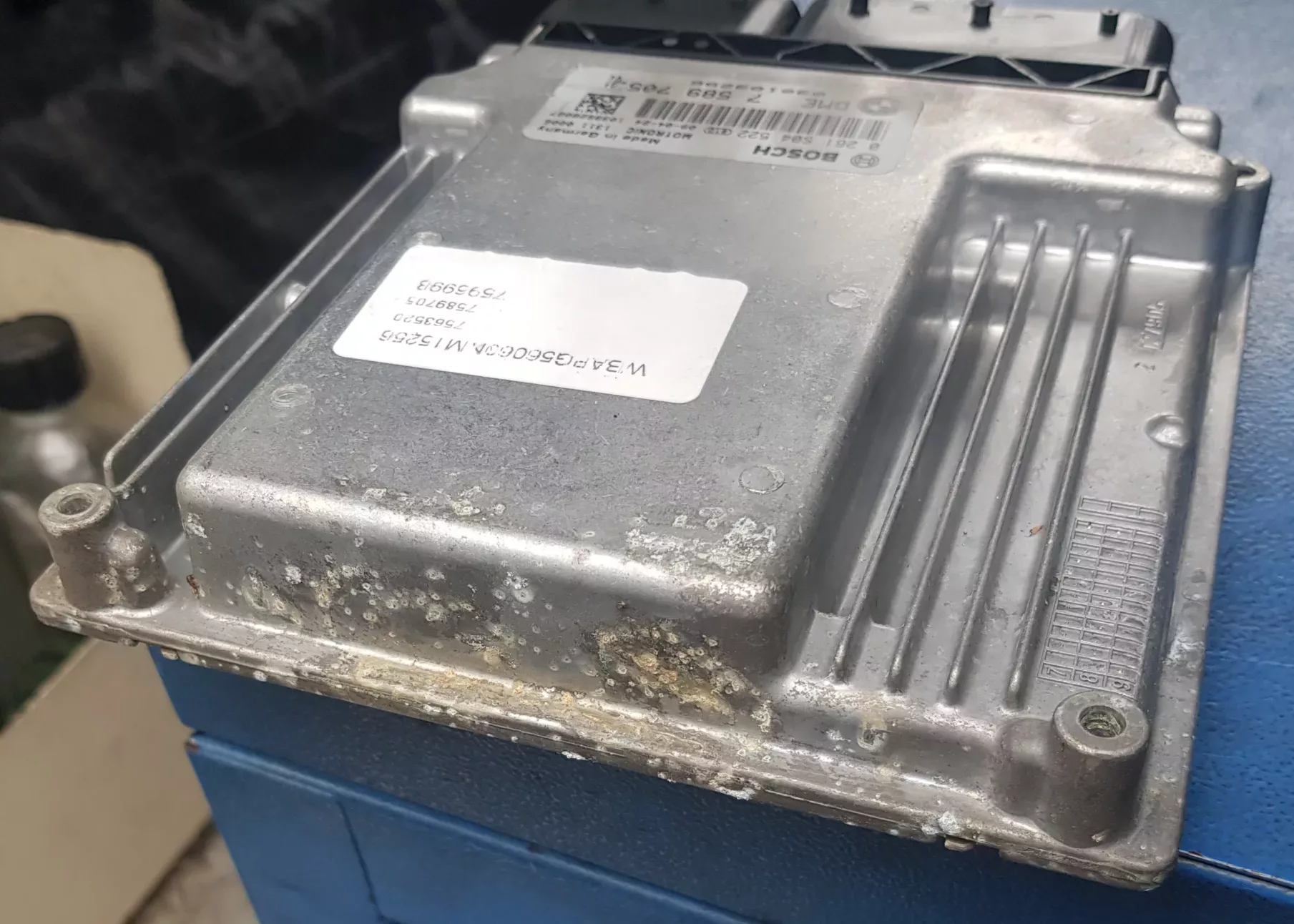If you’re trying to figure out why your BMW 325i e90 won’t spring to life, you’ve landed in the right place. Starting problems can feel like a maze, but I’m here to guide you through it with a flashlight in hand.
Understanding the root cause of why your BMW won’t start is crucial because guessing games can lead to unnecessary repairs and expenses. That’s why an accurate diagnosis is not just sensible; it’s paramount.
Today, I’m going to be talking about a fascinating diagnostic journey that began with roadside help and ended up at the doorstep of a specialized mobile diagnostic. This journey demonstrates the complexity of car issues and the need for expert insight.
It’s not just about a car that won’t start; it’s about understanding the story of that car and its owner. So let’s set the stage for a true diagnostic detective story that led to my business, the Mobile Diagnostic Centre, and the resolution of a perplexing BMW problem.
Understanding the Symptoms and Customer
Experience

Troubleshooting a car that won’t start isn’t just about the mechanical know-how; it’s about piecing together a story. The BMW 325i e90, belonging to a senior lady with no interest in after-market modifications or unnecessary repairs, presented a unique case. The car, which had been functioning without a hitch, suddenly refused to start, leaving the owner perplexed and in need of assistance.
Getting to the root of such issues requires a detective’s eye for detail. This is why I always begin with a comprehensive interview with the vehicle owner. In this case, understanding the daily routine and the events leading up to the failure was crucial. I learned that the vehicle was parked in its usual spot and there were no recent accidents or work done that might explain the sudden non-start.
You’re probably wondering why these details matter. Well, cars have a way of mirroring the habits of their owners. A senior driver typically means a well-maintained vehicle with minimal stress on components – a factor that rules out a host of potential complications. Discovering no recent tune-ups or alterations significantly narrows down the list of suspects.
With the background context set, I was ready to take a deep dive into the car’s condition – not with a wrench at first, but with my most trusted tool for modern diagnostics: a specialized car code reader, which in this case was the Xtool. Now prepared with the customer’s insights and my toolkit in hand, it was time to move on to the technical part of the investigation.
The Diagnostic Process and Tools Used

When it comes to pinpointing the root cause of a BMW 325i e90 that won’t start, having the right tools is crucial. That’s where a scan tool like the Xtool comes in – it’s not just a code reader; it’s virtually a window into the car’s brain. You’re going to find out about how a meticulously conducted diagnosis identifies the problem effectively.
The process begins by making sure the scan tool is properly connected to the car. It’s not a simple plug-and-play; it requires careful handling to establish a successful link. After that, the correct make, model, and year are inputted into the scanner to ensure the information is precisely tailored to the vehicle at hand.
A full system scan is key. It checks all the electronic control units (ECUs) in the car, making it like a complete health check-up for the vehicle’s electronics. This scan can bring forward hidden issues that might not be obvious at first glance.
After the full system scan is completed, I noticed something out of the ordinary. Among all the ECUs that were identified, a vital one was missing – the Engine ECU was not on the list. That was a huge red flag. BMW’s brain, the Engine ECU, is essential for starting up the engine, and without it being recognized, the car was not going to fire up.
In any thorough diagnostic routine, it’s important to check every potential failure point. So, all the fuses, even those seemingly unrelated to the Engine ECU, were checked to rule out any simple electrical faults. Everything in the fuse department checked out okay.
To get to the bottom of this, a closer inspection of the Engine ECU itself was necessary. I looked up the specific location of the Engine ECU on this BMW model and went for a physical inspection. It’s necessary to confirm the presence of power supplies, both positive and negative, at the Engine ECU connectors. But, the moment I laid eyes on the Engine ECU, I knew we were dealing with more than just a power issue – the visible moisture damage on the ECU was a telltale sign of its failure.
Spotting the Signs of a Bad ECU
If you’re trying to figure out why your BMW 325i e90 won’t start, it’s crucial to pay attention to the Engine Control Unit, or ECU. The ECU is the brain of the car, managing everything from fuel injection to the ignition system. When it’s not functioning properly, it can lead to all kinds of starting problems.
I’ve noticed through my experience that a scan tool like Xtool is invaluable for this purpose. A full system scan that omits the Engine ECU is a dead giveaway that something’s amiss. Normally, if every fuse checks out okay and the scan tool boots up correctly but still fails to display the engine ECU while picking up other modules without a hitch, then you’re likely looking at a non-functional ECU.
Other symptoms can often precede complete ECU failure. You might find the BMW is harder to start than usual or requires tricks like stepping on the accelerator during ignition to coax it to life. These signs can start subtly, but tend to grow more persistent over time, culminating in a car that refuses to fire up at all.
If you’ve reached this roadblock, don’t fret. This isn’t just about identifying the problem—it’s also about finding a reliable solution. A failing ECU might seem daunting, but with the right approach, it can be addressed effectively. In the next section, we’ll delve into how to resolve ECU-related issues, particularly the process of ECU replacement and integration into your BMW’s system.
Resolving the Issue: ECU Replacement and Programming

Once I was confident that the problem stemmed from a moisture-damaged Engine ECU, the path forward was clear. Replacing a car’s ECU isn’t like swapping out a battery; it’s a complex electronic component integral to the vehicle’s operation. The right ECU needs to be sourced, one that’s compatible with the specific model of your BMW 325i e90.
The replacement process is equally critical; it’s not just about physical installation but also about ensuring proper integration into the car’s system. This means programming the ECU correctly to communicate with the rest of the vehicle’s electronic network, a task that demands specific technical expertise and equipment.
For the BMW 325i e90 in question, a replacement ECU was secured, and with meticulous care, programmed to sync with the vehicle. The engine roared to life, affirming that the car was responsive once again, much to the relief of its owner. Ensuring that your BMW receives professional care for such intricate issues is non-negotiable; it ensures longevity and performance.
So if you’re experiencing similar issues with your BMW, remember that a non-starting car can be a beacon signaling deeper electronic troubles. A thorough diagnosis, accurate identification of the problem, and skilled intervention by seasoned professionals like those at Mobile Diagnostic Centre can not only save you time but also prevent potential further damage.
Thanks to the combination of methodical troubleshooting, robust tools, and seasoned expertise, daunting problems can be solved with precision and care. If you’re facing a conundrum with your BMW or any other vehicle, don’t hesitate to reach out to an expert who can guide you through the noise to a solution that revives your car’s spirit and ensures peace of mind.

